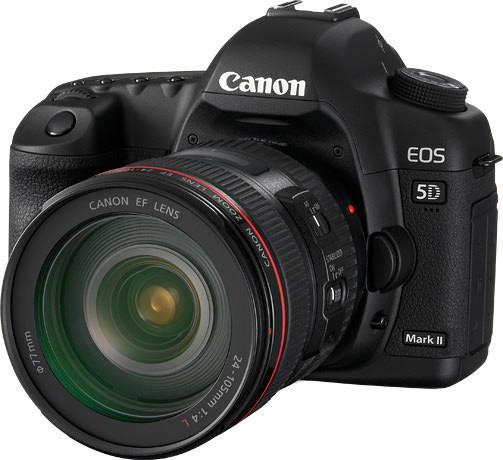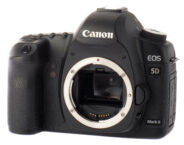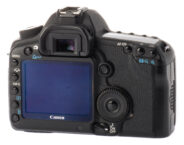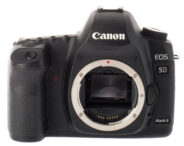Announced
System
Canon EOS system cameras
- Canon EF-M
- Canon EOS 10 S
- Canon EOS 10D
- Canon EOS 1D
- Canon EOS 1D mark II
- Canon EOS 1D mark II N
- Canon EOS 1D mark III
- Canon EOS 1D mark IV
- Canon EOS 1D X
- Canon EOS 1D X Mark II
- Canon EOS 1D X Mark III
- Canon EOS 1Ds
- Canon EOS 1Ds mark II
- Canon EOS 1Ds mark III
- Canon EOS 3
- Canon EOS 3000
- Canon EOS 5000
- Canon EOS 5D
- Canon EOS 5D mark II
- Canon EOS 5D mark III
- Canon EOS 5D mark IV
- Canon EOS 5Ds
- Canon EOS 5Ds R
- Canon EOS 620
- Canon EOS 630
- Canon EOS 650
- Canon EOS 6D
- Canon EOS 6D Mark II
- Canon EOS 700
- Canon EOS 750 QD
- Canon EOS 850
- Canon EOS A2
- Canon EOS D30
- Canon EOS D60
- Canon EOS ELAN
- Canon EOS ELAN 7E
- Canon EOS ELAN 7NE
- Canon EOS ELAN II
- Canon EOS IX
- Canon EOS IX Lite
- Canon EOS Rebel 2000
- Canon EOS Rebel G
- Canon EOS Rebel K2
- Canon EOS Rebel S II QD
- Canon EOS Rebel T2
- Canon EOS Rebel Ti
- Canon EOS Rebel X
- Canon EOS Rebel XS
- Canon EOS Rebel XS N DATE
- Canon EOS RT
- Canon EOS-1
- Canon EOS-1N
- Canon EOS-1N RS
- Canon EOS-1V
Canon EOS 5D mark II
35mm AF digital SLR camera
Specification
| Format: | |
| 35mm full frame | |
Imaging sensor: | 36 × 24mm CMOS sensor |
Resolution: | 5616 × 3744 - 21 MP |
Sensor-shift image stabilization: | - |
| Canon EF [44mm] | |
| Shutter: | |
Type: | Focal-plane |
Model: | Electronically controlled |
Speeds: | 30 - 1/8000 + B |
| Exposure: | |
Exposure metering: | Through-the-lens (TTL), open-aperture |
Exposure modes: | Programmed Auto |
| Aperture-priority Auto | |
| Shutter-priority Auto | |
| Manual | |
| Physical characteristics: | |
Weight: | 810g |
Dimensions: | 152x113.5x75mm |
Manufacturer description #1
The Canon EOS 5D Mark II succeeds the EOS 5D, launched in October 2005, which marked the first digital SLR camera for advanced-amateur users to incorporate a 35 mm full-frame CMOS sensor and enjoyed lasting market acclaim. The EOS 5D Mark II features a newly developed full-size 21.1-megapixel CMOS sensor that not only realizes outstanding resolution performance and rich gradation expression, but also offers an expanded standard ISO sensitivity range of ISO 100-6400*1 which, in extended mode, can be expanded to ISO 50, 12800 and 25600, enabling optimal performance in a diverse range of shooting situations.
The EOS 5D Mark II incorporates the next-generation DIGIC 4 image processor, which enables the high-speed processing of the increased amount of data generated by the high-pixel-count image sensor. The technology supports high resolution imaging performance while making possible a continuous shooting speed of up to approximately 3.9 frames per second*2 and bursts of up to approximately 310 shots.*3
Other features facilitating optimal shooting performance include a newly designed high-performance viewfinder that realizes approximately 98% coverage, and a high-speed, high-precision AF (AutoFocus) system with 9 AF points + 6 Assist AF points.
Making possible the recording of full HD (1,920 x 1,080 pixels) video at 30 frames per second (fps), the EOS 5D Mark II is the first model in the EOS series to offer a movie function, which also includes a standard recording mode (640 x 480/30 fps). Also, further expanding the boundaries of digital SLR photographic expression, the camera incorporates a Live View function with three AF modes — Quick Mode, Live Mode, and Face Detect Live Mode — and a lens peripheral illumination correction function that compensates for light falloff around the image perimeter in response to the characteristics of the type of lens used when shooting.
The EOS 5D Mark II is equipped with a 920,000-dot, 3.0-inch Clear View LCD monitor with a multi-coating that reduces reflections and resists smudging and smearing. With enhanced color reproduction performance, the LCD monitor delivers natural image display, supporting improved image verification, even in bright sunlight.
Canon’s EOS Integrated Cleaning System, a comprehensive dust-reduction system, combines measures for preventing and eliminating dust. On the EOS 5D Mark II, the technology features an improved Self Cleaning Sensor Unit that includes a fluorine coating on the surface of the low pass filter, which realizes further protection by minimizing dust adhesion.
The EOS 5D Mark II backs up high performance with strength and durability. The camera’s rugged shutter unit boasts an impressive 150,000-cycle shutter life while the body features a highly rigid magnesium alloy exterior that ensures reliable performance in the face of challenging shooting conditions. Additionally, the EOS 5D Mark II’s new Battery Pack LP-E6 realizes 1.3x the battery capacity of its predecessor, providing users with higher levels of mobility.
In addition to the EOS 5D Mark II, Canon today also announced the introduction of the Wireless File Transmitter WFT-E4/E4A, which enables the transfer of images to a server or computer via wireless LAN or Ethernet.
Manufacturer description #2
Amstelveen, The Netherlands, 17 September 2008: Canon announces the full frame, 21.1 Megapixel EOS 5D Mark II: the first EOS with full High Definition video capability.
Compact, lightweight with environmental protection, EOS 5D successor boasts a newly designed Canon CMOS sensor, with ISO sensitivity up to 25,600 for shooting in near dark conditions. The new DIGIC 4 processor combines with the improved CMOS sensor to deliver medium format territory image quality at 3.9 frames per second, for up to 310 frames.
Triggered from Live View Mode, HD video capture allows users to shoot uninterrupted at full 1080 resolution at 30fps – for amazing quality footage with outstanding levels of detail and realism.
The integration of HD movie capability into a high-end 21.1 Megapixel camera opens a multitude of new possibilities for photojournalists and news photographers. With its full frame CMOS sensor and outstanding ISO performance, the EOS 5D Mark II will appeal to any photographer in search of the finest camera equipment available – from studio and wedding to nature and travel photographers.
Other improvements to the EOS 5D include
- Addition of Canon’s EOS Integrated Cleaning System, with a new Fluorine coating on the low-pass filter
- Larger 3.0” Clear View LCD with VGA resolution, a 170° angle of view and anti-reflective coatings
- Improved menu system including Quick Control Screen for more direct access to common settings
- Automatic peripheral illumination correction, utilising detailed EF lens information to optimise JPEG images straight out of the camera
- Magnesium alloy construction with additional environmental protection
- UDMA memory card compatibility.
“Professional photojournalists and wedding photographers already choose the EOS 5D for its discrete size and outstanding image quality,” said Mogens Jensen, head of Canon Consumer Imaging. “The addition of HD movie recording opens a new chapter for EOS. It creates new possibilities for EOS photographers to capture and share their stories and to stay relevant in a rapidly changing digital landscape.”
Key Specifications:
- New 21.1 Megapixel CMOS sensor with improved EOS Integrated Cleaning System (E.I.C.S.)
- New Full HD 1080 resolution movie recording
- 3.9 frames per second continuous shooting
- High performance DIGIC 4 providing superb image quality
- Maximum 310 large JPEG images in a single burst with a UDMA card
- 3.0” VGA (920k dots) Clear View LCD
- ISO 100-6400 (expansion from 50 up to 25,600)
- 9 AF points + 6 Assist AF points
Additional information
New CMOS sensor
The EOS 5D Mark II’s newly designed full frame 21.1 Megapixel CMOS sensor features ISO sensitivity from 100-6400, expandable to 50, 12,800 and 25,600. Large 6.4µm2 pixels have been redesigned to capture more light and yield a better signal to noise ratio to ensure lower noise images throughout the ISO range. The full frame sensor has the same dimensions as a frame of 35mm film. This means that wide-angle lenses stay wide, without the change in angle of view associated with smaller sensor cameras. As well as benefiting from finer control over depth of field, photographers moving up to the EOS 5D Mark II’s full frame format will find the newly designed wide, bright 98% coverage viewfinder on a joy to work with.
New DIGIC 4 processor
A new DIGIC 4 processor combined with 14-bit analogue to digital conversion provides smooth gradations in mono-tonal areas such as skies, and highly accurate colour rendition. As well as HD movie shooting, DIGIC 4’s high speed provides for long uninterrupted continuous bursts of large JPEGs, near-instant start-up times and immediate and fast review after shooting. DIGIC 4 also provides for improved noise reduction algorithms, complementing the already low noise images from the EOS 5D Mark II’s CMOS sensor.
HD video capture
The EOS 5D Mark II is Canon’s first D-SLR to incorporate full HD 1920x1080 video capture. Once filming is started from Live View mode, photographers can fire off either single of continuous stills, with video capture continuing after the final frame is captured.
See everything
A new 3.0” VGA resolution LCD provides a wide 170º angle-of-view, providing plenty of clarity for accurate focus checks in playback. The screen brightness can automatically adjust to suit viewing conditions, extending battery life in low light and improving viewing in bright conditions. A new dedicated Live View button switches modes to display a real-time image on the LCD. This allows EOS 5D Mark II photographers to enjoy simplified shooting from awkward angles. Simple connection to a PC provides easy remote shooting.
Precision focus and metering
A 9-point auto focus system is supported by 6 additional invisible Assist AF points, located inside the spot-metering circle to optimise subject tracking performance in AI SERVO AF mode. For accurate exposure readings in tricky lighting conditions, the spot metering circle covers just 3.5% of the frame.
Control
The EOS 5D Mark II’s redesigned menu system includes a new Quick Control screen, for instant access to the most commonly changed settings. A new Creative Auto mode allows photographers to cede control of key settings to the camera, while retaining control over creative variables such background blur, drive mode and image brightness. Custom user settings allow photographers to switch between two completely different camera setups. This is ideal for changing quickly between two different environments, such as switching from working inside a church without flash to outdoors with fill-flash at a wedding.
Accessories
Shooting flexibility is enhanced with a range of new accessories. Shooting capacity can be extended with either the high capacity 1800mAh lithium-ion Battery Pack LP-E6, or Battery Grip BG-E6.
A new optional Wireless File Transmitter – the WFT-E4 – offers external HDD and GPS compatibility along with ability to transmit images direct to computer or FTP server, or operate the camera wirelessly. Both the BG-E6 and WFT-E4 feature a vertical orientation shutter release and other key controls for comfortable portraiture work, with a substantial grip to help balance the camera when used with long lenses.
Similar cameras (1)
35mm full frame • Auto focus • Digital • Singe-lens reflex • Canon EF mount
| Model | Shutter | Metering | Modes | Year |
|---|---|---|---|---|
| Kodak DCS Pro SLR/c | E, 1/6000 | TTL • OA | PASM | 2004 |




